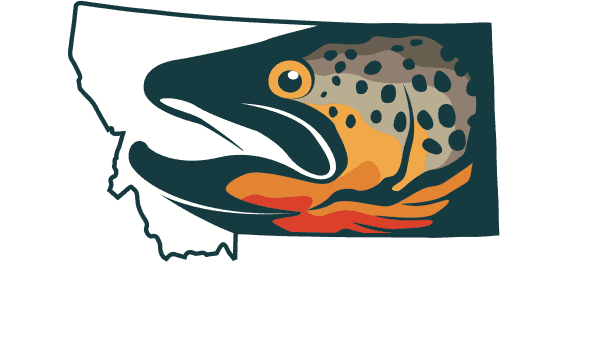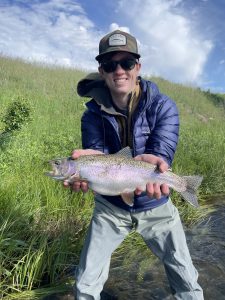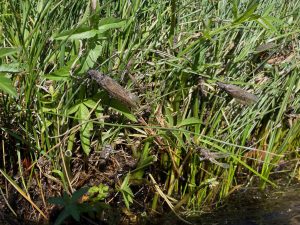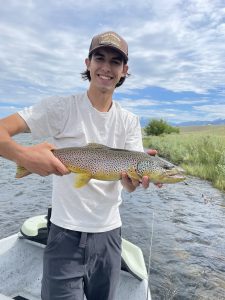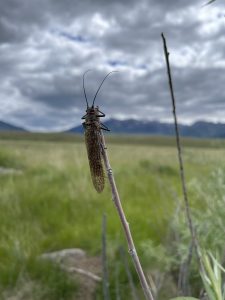It is that time of year that gets all anglers here in Montana excited: The Salmon Fly Hatch!
The Salmon fly hatch on our waters is an exciting time for fly anglers. These large, colorful insects emerge along the area’s rivers and streams in late spring or early summer, usually around mid-June to mid-July. These flies, a stonefly species (Pteranarcys californicus), are known for their impressive size and are a favorite seasonal food source for colossal trout, making this hatch a highly anticipated event for anglers.
Large trout eat infrequently, not relying on large amounts of smaller insects to satisfy their caloric requirements like smaller trout—too much effort for these beasts—but instead eating more significant portions like small fish, mice, and crayfish. The Salmon fly fits the menu nicely.
When fishing during the Salmon fly hatch, it is essential to match the hatch by using large, dry fly patterns that mimic the appearance of these insects. Popular patterns include Chubby Chernobyls, Sofa Pillows, and various foam-bodied imitations in sizes 4 through 8. Are you tying your own? Here’s a great pattern – Henry’s Fork Salmon Fly – showing the general idea of what the pattern should look like. If you’re coming from out of state and stocking up on flies locally to match the hatch – be sure to research the proper size and pattern. Once, I had an angler come out from the East and bring hopper patterns with the most significant size hook, a 10. If you’re guiding with us – all of our guides will have an ample supply of the appropriate patterns.
On to strategies: Early morning, by that, I mean getting on the river at first light, and late afternoon into early evening are the best times to fish this hatch. Reading the water will determine the rig setup. If you see noses up taking on the top, your dry fly technique is game on. Are you seeing bugs but no rises? The hopper/dropper technique is the way to go. Use the Salmon fly pattern up top and a large brown or black stonefly nymph pattern as the dropper. Remember – only two hook rigs are legal here in MT.
Look for areas with overhanging vegetation, rocks, or logs near the riverbank where Salmon flies are known to lay their eggs. Trout will often position themselves in these areas to prey on the insects, so casting your fly close to these structures can be productive.
Fishing in the middle of the hatch can be challenging as you will compete with many naturals. Other strategies include fishing ahead of the hatch with larger stone patterns or fishing behind with the dry patterns for fish who remember what just happened and want to satisfy their hunger with another delicious morsel.
Fishing the Salmon fly hatch in Southwest Montana can be one of the year’s most exhilarating and rewarding experiences. By using the right flies, techniques, and strategies, anglers can maximize their chances of success during this exciting time on the water.

Of course, using a guide for this hatch is paramount for attacking this epic hatch. So reach out today to plan your adventure on this bucket list event.
Thank you for staying connected with us on current conditions, reports, and news!
